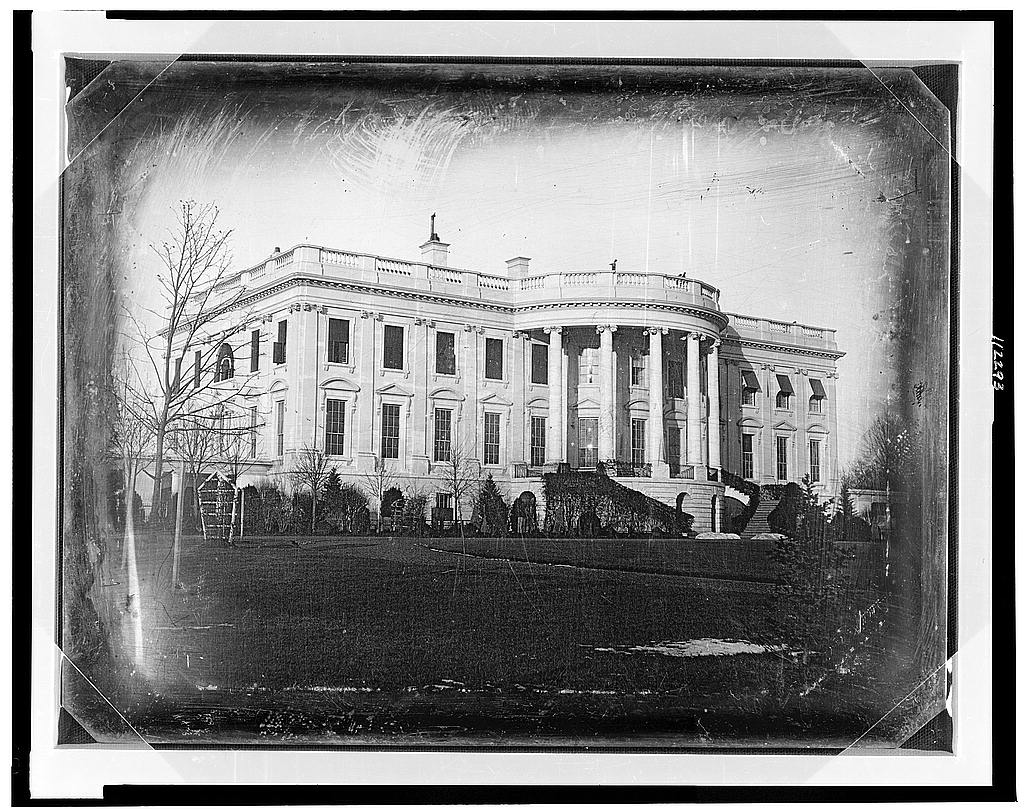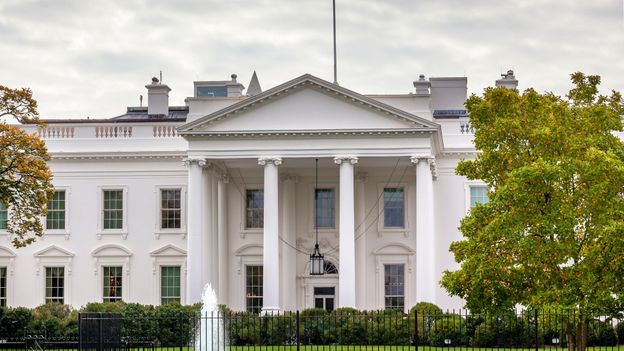Table Of Content

Burned to the ground by the British in August 1814, the President’s House was nearly left in its smoldering remains as lawmakers contemplated moving the capital to another city. Instead, Hoban was brought back to rebuild it nearly from scratch, in some areas incorporating the original, charred walls. Upon reassuming residency in 1817, James Madison and his wife Dolley gave the home a more regal touch by decorating with extravagant French furniture. The wallpaper had hung previously on the walls of another mansion until 1961 when that house was demolished for a grocery store. Just before the demolition, the wallpaper was salvaged and sold to the White House. Jacqueline Kennedy, wife of President John F. Kennedy (1961–63), directed a very extensive and historic redecoration of the house.

National History Day Resources
Above the pantry, the Usher’s office, and the lobby elevator on the first floor is a mezzanine that includes some small closets, another pantry for pastries, and the clock room. Except for the entrance hall, which ceiling is 5.80 meters high, and the east room at 6.10 meters, the rest of the ceilings rise to 5.50 meters. The first floor of the White House is often called the “State Floor” because this is where formal state receptions are held.
Native American History Museums in the USA
George Washington died on December 14, 1799, before the President’s House was finished. The building begun in 1792 had taken eight years to be ready to house the president, but Washington would not live to see it. On November 1, 1800, John Adams became the first president to occupy the building, as required by the Residence Act, but he lived there just four months before he lost office. Scottish stonemasons whitewashed the building in 1798 to protect the stone, leading to its being called the White House.
Jacqueline Kennedy restoration
Less than fifty years after the Roosevelt renovation, the White House was already showing signs of serious structural weakness. President Harry S. Truman began a renovation of the building in which everything but the outer walls was dismantled. The reconstruction was overseen by architect Lorenzo Winslow, and in 1952, the Truman family moved back into the White House.
Set on 18 acres of land, the site was chosen by the first president, George Washington. After Abraham Lincoln's presidency, Inaugural crowds became far too large for the White House to accommodate them comfortably. However, not until Grover Cleveland's first presidency did this unsafe practice change. He held a presidential review of the troops from a flag-draped grandstand built in front of the White House. This procession evolved into the official Inaugural parade we know today.
How Did 3 People Seemingly Escape From Alcatraz?
Dickens later wrote, “I take it for granted the Presidential housemaids have high wages.” Until the Civil War, however, most White House servants were enslaved people. Moreover, the wages of all White House employees—as well as the expenses for running the White House, including staging official functions—were paid for by the president. Not until 1909 did Congress provide appropriations to pay White House servants. A final major overhaul took place after Harry Truman entered office in 1945. With structural problems mounting from the 1902 installation of floor-bearing steel beams, most of the building’s interior was stripped bare as a new concrete foundation went in place. The Trumans helped redesign most of the state rooms and decorate the second and third floors, and the president proudly displayed the results during a televised tour of the completed house in 1952.
Where to stay in Helsinki, Finland's design-conscious capital
White House Concerned As CT-Built Helicopter Burns Lawn: Report - Patch
White House Concerned As CT-Built Helicopter Burns Lawn: Report.
Posted: Wed, 24 Apr 2024 15:57:40 GMT [source]
Truman and his family lived in Blair House across the street during the renovations. As the official workplace and executive residence of the president of the United States, the White House stands as one of the most famous, and recognizable, buildings in the world. But behind its stately neoclassical facade, details of its construction and history are far less well-known. Below, find answers to six common questions about the iconic structure that has served as home to all but one U.S. president. Visitors are greeted at the north facade, with stately columns and a pedimented portico — very Classical in design.
The Vanishing Cornerstone
The executive mansion has been the official residence of every subsequent president. Beautiful landscaping has graced the White House grounds since the administration of Thomas Jefferson. The South Lawn features over three dozen commemorative trees that date back to the 1870s. During the Kennedy administration, Rachel Lambert “Bunny” Mellon redesigned the White House gardens, including the famed Rose Garden outside the West Wing. The East Garden, also redesigned by Mellon, was later named in honor of Jacqueline Kennedy.
White House to announce new definition of zero-emission buildings - The Washington Post - The Washington Post
White House to announce new definition of zero-emission buildings - The Washington Post.
Posted: Thu, 28 Sep 2023 07:00:00 GMT [source]
Why the Washington Monument was once a national embarrassment
Each president adds their own personal style to the workspace, choosing artwork from the White House collection or borrowing from museums. Six desks have been used in the Oval Office, the most famous of which is the Resolute desk. Made of wood from the HMS Resolute, the desk is currently in use by President Biden.
In 1800, President John Adams and first lady Abigail Adams moved into the still unfinished building on November 1. While it was much smaller than L’Enfant’s proposal, the completed building was still the largest home in the country and would retain that title until after the Civil War. According to the White House Historical Association, the cost of construction was $232,372. A guide to 10 of the very best historic sites in America's capital city, including The Capitol, Lincoln Memorial and The White House. The scale and status of the building today reflects its profile on the world stage as a landmark of presidential – and by extension, American – power.
The house was considerably smaller than the grand palace originally designed by L’Enfant, nevertheless, when completed, the president’s house was the largest residence in the United States and remained so until the 1860s. The initial plans for the construction of the Presidential Palace were made by the engineer and artist Pierre Charles L’Enfant, who worked with George Washington on the design of a capital city for the new nation. L’Enfant envisioned a majestic house roughly four times the size of the current White House. Construction began on October 13, 1792, when the cornerstone was laid, and although Washington never lived in the presidential house, he supervised its construction.
This floor is on the same level as the second floor of the West Wing and the East Wing, as the residence sits on the upper floor. Despite architect Latrobe’s suggestions to rebuild it with a new design, its new occupant, President James Madison, decided to restore it and return it to its original appearance, under the supervision of the also original architect, James Hoban. The second president to occupy the White House was Thomas Jefferson, who moved in March 1801, with the residence still unfinished.
“The Truman renovation is the largest reconstruction at the White House because of the sheer amount of demolition and reconstruction that you see inside,” says Fling. Jefferson announced the competition—which offered a prize of $500 (or a medal of equal value)—and even reportedly submitted a design himself under the initials “A.Z”. In July of 1792, Irish-born architect James Hoban’s submission was selected by Washington, and he was hired to build the White House. The first Inaugural open house at the White House took place in 1805 and was held by President Thomas Jefferson following his swearing-in ceremony.
After Sunday’s finale of the Masterpiece drama Mr Bates vs the Post Office, meet the real-life underdogs. Masterpiece launches the third and final season of the darkly comic caper Guilt. Saturday Night Live’s Colin Jost brings his barbed humor to the White House Correspondents Dinner in Washington, D.C. Other rooms include a home cinema room, a gym, an indoor swimming pool, and both a chocolate shop and a flower shop.

No comments:
Post a Comment